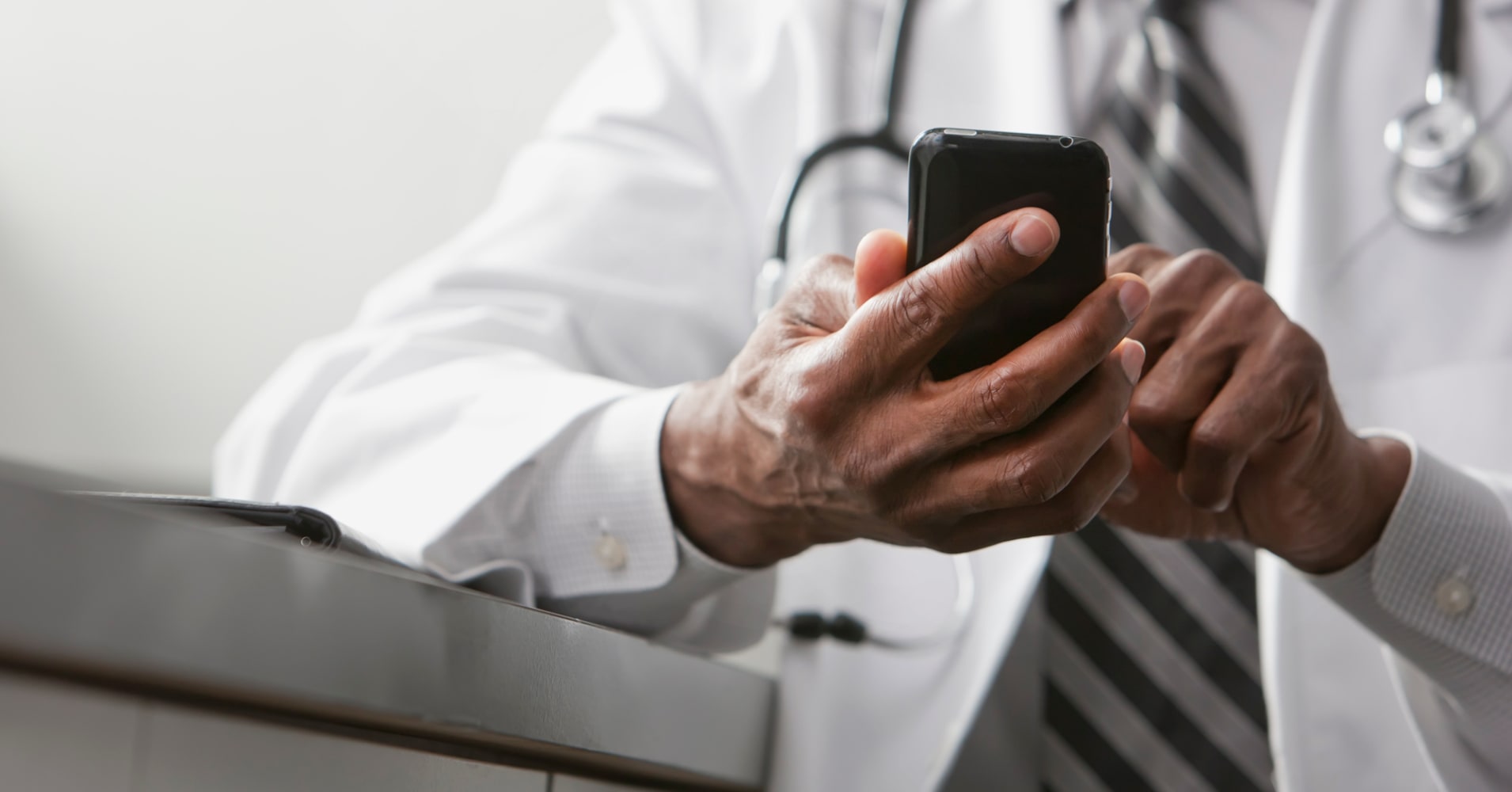
div > div.group > p:first-child”>
Think of it as the 21st century version of the doctor’s house call. Telemedicine, which allows your doctor to visit, diagnose and treat you virtually — all in the comfort of your own home — is growing rapidly.
Usage is up 53% from 2016 to 2017, according to a J.D. Power study issued in July.
“It’s really taking health care back to the patients and the customers of health care, which is very exciting,” Dr. Andrew Watson, vice president of Clinical Information Technology Transformation at the University of Pittsburgh Medical Center, said in an interview with CNBC’s “American Greed.”
Doctors and patients like the flexibility and time savings the online technology affords, particularly in rural areas where access to care can be difficult. In addition to being “seen” by your doctor, telemedicine allows you and your physician to exchange health data and other information.
Policymakers and insurance companies like the cost savings. The J.D. Power study says telemedicine is reducing emergency room visits, noting that just a 1% decrease in emergency room visits, replaced by telemedicine, can result in average savings of $102 million per year.
No wonder telemedicine is one of the few areas of health care with bipartisan agreement in Washington. A two-year budget deal approved in 2018 eased restrictions on Medicare reimbursement for telemedicine services, and a bill to combat the opioid epidemic, signed into law that year, included new funding for opioid-specific telemedicine services. In October, President Donald Trump signed an executive order further expanding the use of telemedicine under Medicare.
But the widespread appeal and growing acceptance of telemedicine has also attracted fraudsters seeking to use enthusiasm about the technology to their advantage.
Keisha Williams of Ashburn, Virginia, admitted running a $5 million scam in which she told prospective investors she had won the rights in a bankruptcy auction to telemedicine software created by an Austrian company, Zydacron. She said she needed the investors’ money to complete the purchase of the software, and she promised to pay them back with interest as high as 300%.
Excited by the prospects for telemedicine, some 50 investors ponied up tens of thousands of dollars apiece. But rather than using the money to purchase the software, Williams spent nearly all of it on herself, according to prosecutors, paying for expensive trips and luxury goods.
“Keisha Williams displayed absolutely no empathy whatsoever for her victims and the positions she had put them in. It was a lack of conscience that was verging on sociopathic,” Assistant U.S. Attorney Grace Hill told “American Greed.”
Williams, 44, pleaded guilty in 2018 to multiple felonies including fraud, money laundering and conspiracy. She is serving a 15½-year sentence at a minimum-security federal prison in West Virginia.
Watson, who is also a past president of the American Telemedicine Association, believes the technology and the prevalence of telemedicine are advancing to the point where scams like Williams’ are becoming far more difficult to pull off. He likens it to other medical technologies like transplantation and minimally invasive surgery.
“It’s all just the culture of a learning environment, and we’re getting used to a new way of doing medicine,” he said.
Despite that enthusiasm in the medical community, telemedicine is still reaching only a small percentage of the public.
The J.D. Power study, which included a June survey of 1,000 people, found that fewer than 10% had used telemedicine services in lieu of an office or emergency room visit. Usage was highest in the West — 11.1% — and lowest in the Northeast, 5.7%.
The study cited low awareness about the technology as the main obstacle to telemedicine’s growth. But patient skepticism is also an issue.
“It’s hard enough to get a doctor to listen to you when you’re sitting in front of them,” one survey respondent said. “I’m sure they would be even more distracted online.”
“It could be more prone to error without seeing a patient in person,” said another.
Others worried about whether the technology is secure.
“Massive privacy issues, I am unclear as to proof of providers’ qualifications,” a respondent said.
But Watson, a colorectal surgeon, believes those concerns will evaporate as patients and doctors become more accustomed to virtual visits.
“I’ve done over 500 consults — that’s when I see the patients and talk to them remotely,” he said. “I feel very comfortable taking care of them, seeing them, examining them and treating them. It’s very effective, and we’re seeing this in the literature as well, which is exciting.”
The J.D. Power study likens the development of telemedicine to public acceptance of mobile banking.
“Think about it,” the study says. “Ten years ago, would you have ever imagined taking a picture of a personal check for mobile deposit?”
But the study says the industry still has plenty of work to do to build public confidence in the technology.
“A ‘build it and they will come’ approach will not be optimal,” the researchers said.
Scams like Williams’ probably do not help.
See how Keisha Williams misused the promise of a burgeoning medical technology to extract $5 million from investors and fund her outrageously lavish lifestyle. Watch an ALL NEW episode of “American Greed,” Monday, Jan. 13 at 10 p.m. ET/PT, only on CNBC.

